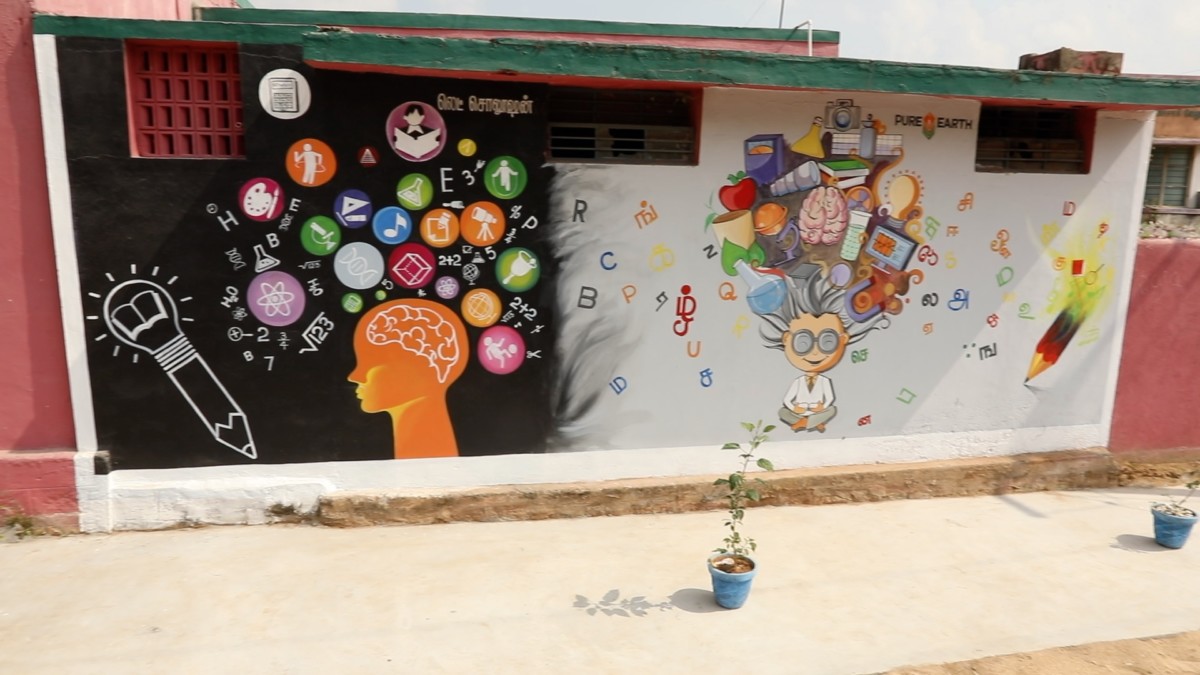Pure Earth has been active in India since 2006. Since then, Pure Earth and its local partners have conducted thousands of blood lead level tests of children under five years of age and pregnant women, identified 716 contaminated sites, and completed rapid screening assessments at 500 of these. Pure Earth has also conducted a number of risk-reduction projects across India and has engaged with the government on a variety of pollution issues.
1. Convincing key stakeholders
We are continuously working to bring in new, credible and impactful voices from government, issue experts, journalists, the private sector and philanthropies to initiate and strengthen action on lead exposure solutions, particularly for lead-laden aluminum cookware, local paint, toys, adulterated spices and unsound used lead acid battery recycling.
We brought together manufacturers, recyclers, distributors, regulators, scientists, and philanthropists of lead-acid batteries in India to recommend improvements in BWMR 2022 and facilitate the faster adoption of good practices. Additionally, we established and are active members of the India Working Group (IWG), which includes experts from health, policy, governance and execution, science and research, media and communications, industry and social impact. The IWG meets quarterly to deliberate and further advocate on the most pressing and feasible actions to reduce lead exposure in India.
2. Blood lead surveillance
We are conducting statewide blood lead level (BLL) surveys in Bihar, Tamil Nadu, and Maharashtra.In July 2023, concluded Blood Lead Level (BLL) survey among 697 children and 55 pregnant women in 8 Bihar districts (Patna, Nawada, Vaishali, Bhagalpur, Muzaffarpur, Purnea, West Champaran & Gaya). The results indicated that more than 90% of children in urban Bihar and more than 80% of children in rural Bihar have BLL above 5 µg/dL. With the Ministry of Health and Family Welfare and State Health Departments, we are advocating for the launch of population-level Blood Lead Surveillance. This will help in identifying the prevalence of lead poisoning, and its hotspots across the nation.
3. Lead contamination and source identification
We have identified and assessed more than 500 sites in India for toxic contamination under the Toxic Site Identification Program (TSIP). The majority of these sites are contaminated due to unsafe battery recycling. The First lead source-apportionment study conducted by Pure Earth in Patna in 2020 identified spices, mainly lead-laden turmeric and red chili powder, as one the key sources in homes posing serious health risks to about 85% of kids tested for BLLs. These spices are the main ingredients of all Indian meals consumed daily and are subject to adulteration, with evidence of its occurrence in the South Asia region. Hence, the interest in monitoring Lead-contamination is crucial. Pure Earth is collaborating with Stanford University and others to gather authentic information on the supply chains and understand the scope of adulteration in 4 states (Bihar, eastern parts of Uttar Pradesh, West Bengal and Jharkhand). According to three states, Maharastra, Uttar Pradesh and Tamil Nadu; Rapid Market Screening Program (RMS), the products most commonly contaminated with lead in India are Aluminum cookware & food wares, ceramic food wares, toys, local paint, spices, khol eyeliner.
4. Source-specific risk reduction interventions
Toxic site remediation
We executed the first lead risk reduction project in Patna in the year 2018 and the second in Vellore, Tamil Nadu, in the year 2020, both around informal battery makers located in close proximity to an elementary school. We, along with local partners and community participation, closed the sub-standard operations of the ULAB, successfully remediated the soil contamination, and cleaned the homes and school’s interior of lead dust.
We have approached the Food Safety and Standards Authority of India to
Strengthen further the implementation of the Food Safety and Standards Act, 2006, especially the standards for lead in spices and its tracking.
Ministry of Environment Forest and Climate Change, Center/State Pollution Control Board are requested for
The adoption of standard operating procedures (SOPs) that PE with other organisations drafted for used lead acid battery (ULAB) recycling.
Stricter Enforcement of Lead Contents in Household and Decorative Paints Rules, 2016.
5. Information, education and communication
Widespread lack of awareness about the issue and the solutions, or, where there may be some awareness, a lack of understanding about the breadth, seriousness and long-term impacts of lead perpetuates inertia.
We have been posting short videos and messages on social media; organising public events and reaching out to larger audiences through the Internet, blogs, print media and TV. We believe this lead pollution crisis can be solved, Together, we can solve pollution, save lives, and protect the planet.


